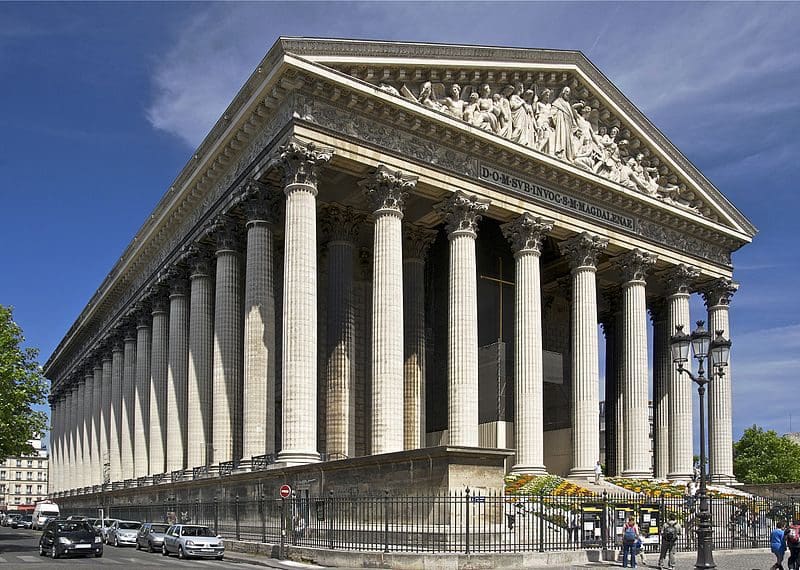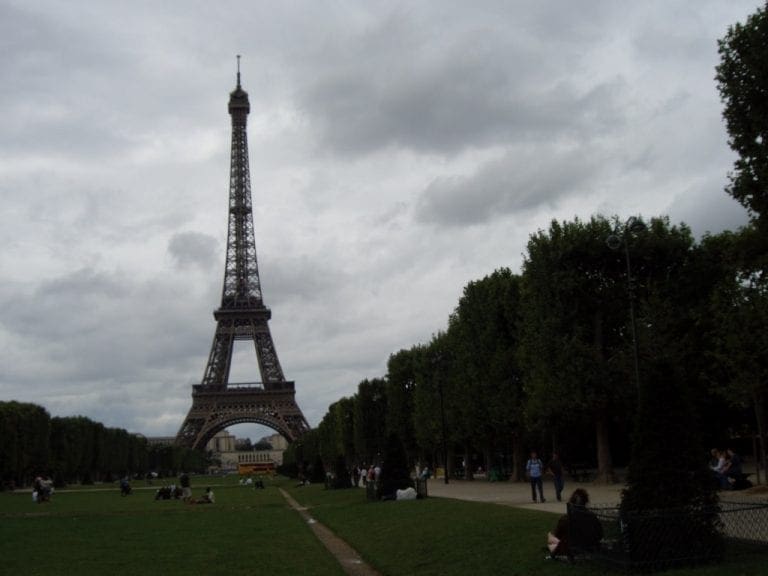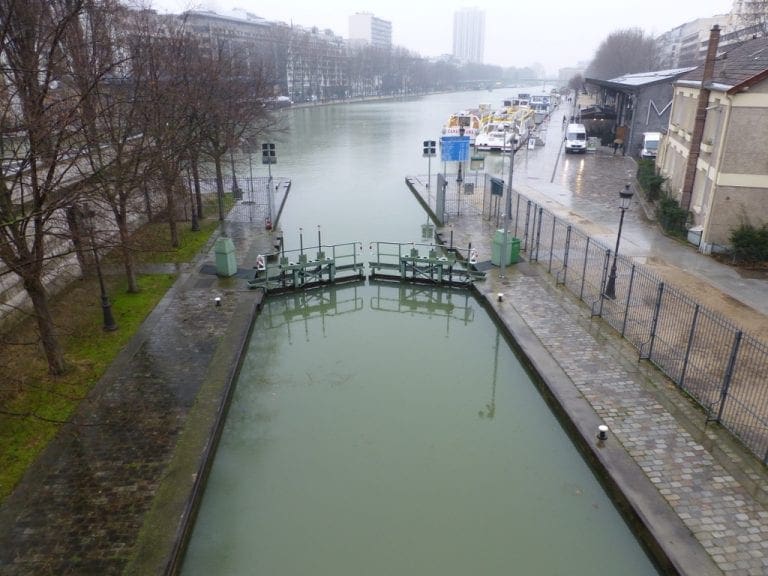I am La Madeleine
I am l’eglise de la Madeleine, a church in Paris. I was designed in my present form as a temple to the glory of Napoleon’s army. To my south lies the Rue Royal and Place de la Concorde, to the east is the Place Vendôme, and to the sout-east the Tuileries Garden and the Louvre.
The church, which is dedicated to Mary Magdalene, is one of the best-known buildings in Paris – because of its prominent locations and great size. I stand at one end of the curve of the Grand Boulevards. I’ve had an interesting history. Building began in 1764 but was not completed until 1845. There were proposals to convert the building into a parliament, a stock exchange, a train station or a public library for the nation. Napoleon decided to build a temple dedicated to military glory – thus the 20m Corinthian columns encircling the building.
The bas-reliefs on the bronze doors show the Ten commandments. The inside is lavishly decorated with marble and guilt.
To the left as you enter is ‘Baptism of Christ.
Organists of the church have included
1858-1877 Camille Saint-Saens
1896-1905 Gabriel Faure
The funeral of Frederic Chopin at the Church of La Madeleine was delayed almost two weeks, until October 30, 1849. Chopin had requested that Mozart’s Requiem be sung. The Requiem had major parts for female voices, but the Church of the Madeleine had never permitted female singers in its choir. The Church finally relented, on condition that the female singers remain behind a black velvet curtain. In the presence of 3,000 people Mozart’s Requiem was performed by the Paris Music Academy (Conservatoire de Paris) choir and orchestra for the first time in a Church in Paris.
Masses and other religious services are celebrated daily. Funerals and the most fashionable weddings in Paris are still celebrated here. In the basement of the Church (entrance on the Flower Market side) is The Foyer de la Madeleine – a restaurant. For a yearly subscription fee of 3 Euros one can dine under the vaulted ceilings on a three course French meal served by volunteers for the price of 7.50 Euros.
Recitals and concerts are held in the church almost daily.
I have my own Metro station which is on three lines: 8, 12 and 14.















